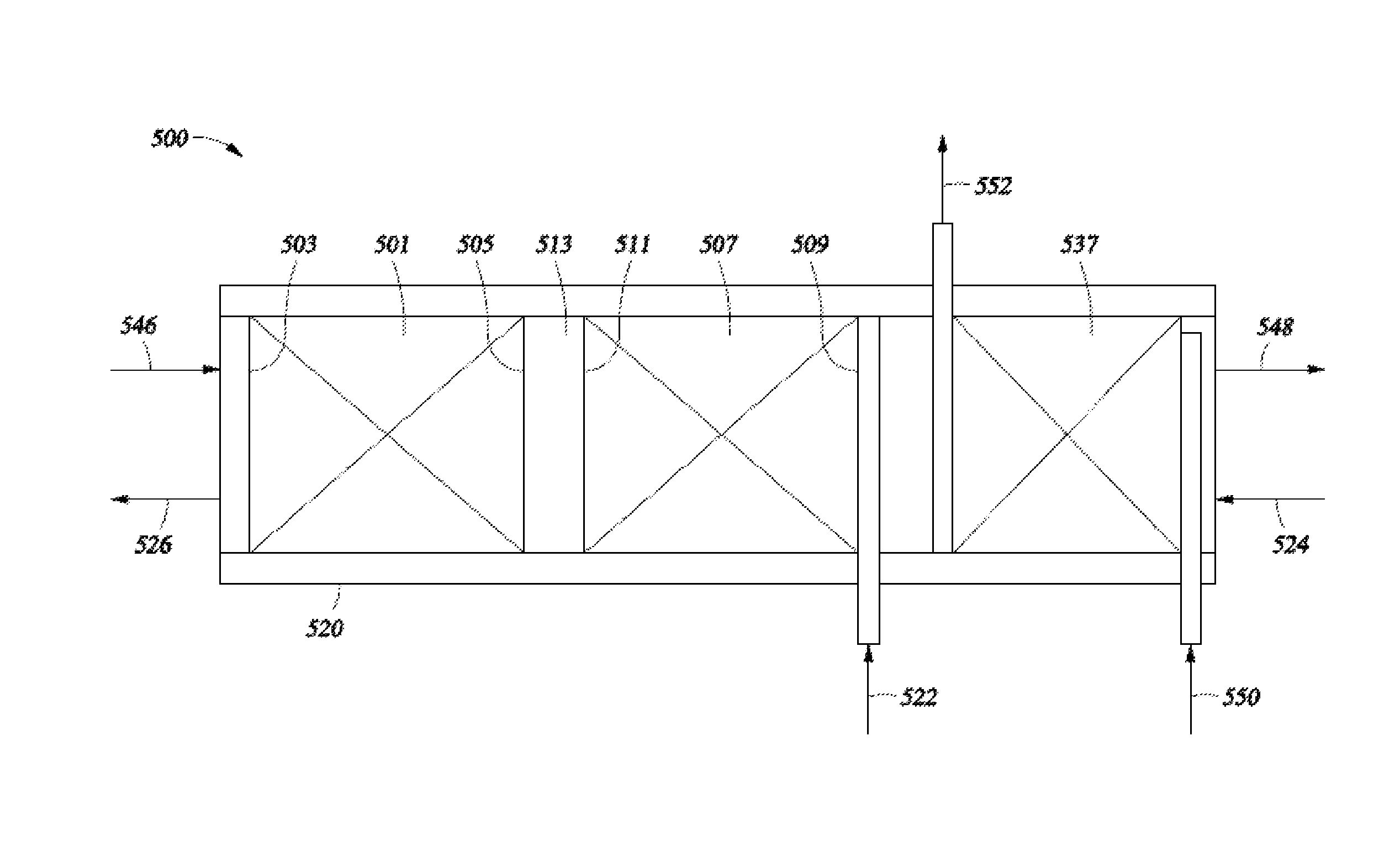Selective hydrogenation of alkynyl-containing compounds
a technology of alkynyl-containing compounds and selective hydrogenation, which is applied in the direction of hydrocarbon by hydrocarbon cracking, chemical apparatus and processes, organic chemistry, etc., can solve the problems of significant amounts of undesirable compounds, undesirable saturates and green oil, and additional problems, etc., to achieve efficient heat recovery, lessen green oil formation, and enhance the effect of system efficiency
- Summary
- Abstract
- Description
- Claims
- Application Information
AI Technical Summary
Benefits of technology
Problems solved by technology
Method used
Image
Examples
embodiment 1
2. The method of embodiment 1, wherein the heat is produced at operating conditions sufficient to yield a catalyst heat release rate ≧1.8 MJ / hr / cc of hydrogenation catalyst.
3. The method of any one of embodiments 1 to 2, wherein the feed stream flows through the conduit at a pressure drop of ≦69 kPa per meter of conduit.
4. The method of any one of embodiments 1 to 3, wherein the conduit has a cross sectional area of less than or equal to 50 mm2
5. The method of any one of embodiments 1 to 4, wherein the conduit is in a microchannel converter.
embodiment 5
6. The method of embodiment 5, wherein the recovering comprises:
passing the heat transfer fluid through at least one of a plurality of conduits in the microchannel converter;
heating the heat transfer fluid via indirect heat transfer; and removing the heat transfer fluid from the microchannel converter.
embodiment 6
7. The method of embodiment 6, wherein the indirect heat exchange is through a material having a thermal conductivity of ≧10 W / m-C at operating conditions.
8. The method of any one of embodiments 1 to 7, wherein the hydrogenation catalyst is disposed on an inner wall of the conduit.
PUM
| Property | Measurement | Unit |
|---|---|---|
| mol % | aaaaa | aaaaa |
| mol % | aaaaa | aaaaa |
| mol % | aaaaa | aaaaa |
Abstract
Description
Claims
Application Information
 Login to View More
Login to View More - R&D
- Intellectual Property
- Life Sciences
- Materials
- Tech Scout
- Unparalleled Data Quality
- Higher Quality Content
- 60% Fewer Hallucinations
Browse by: Latest US Patents, China's latest patents, Technical Efficacy Thesaurus, Application Domain, Technology Topic, Popular Technical Reports.
© 2025 PatSnap. All rights reserved.Legal|Privacy policy|Modern Slavery Act Transparency Statement|Sitemap|About US| Contact US: help@patsnap.com



